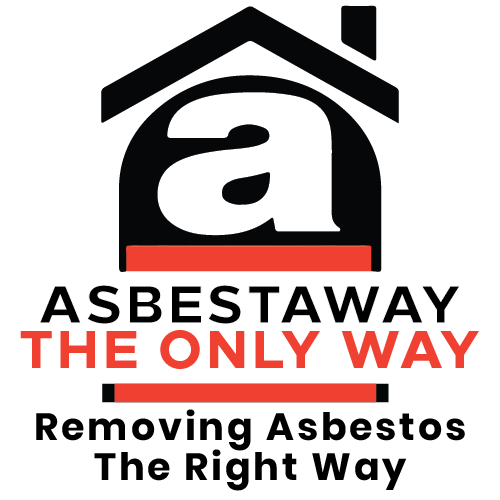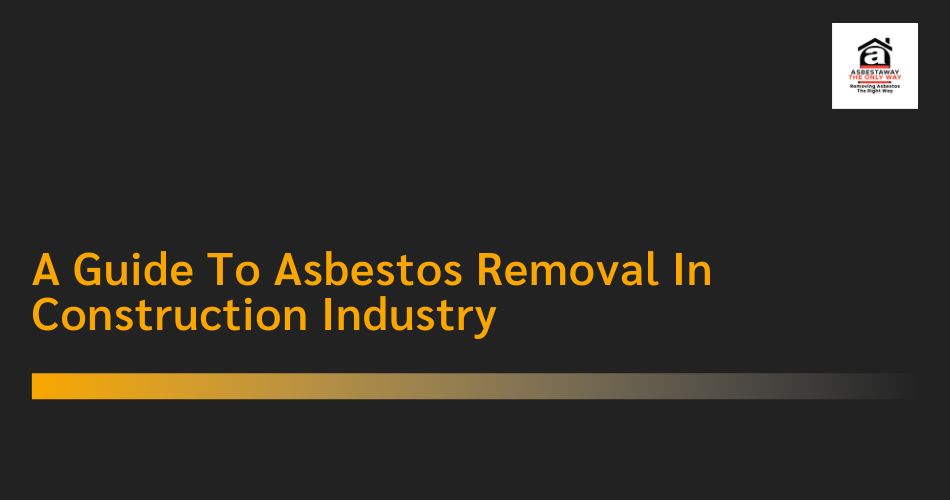Asbestos, a mineral once lauded for its heat-resistant and durable properties, played a significant role in the Australian construction industry for much of the 20th century. Due to its remarkable versatility, asbestos was used extensively in building materials such as insulation, roofing, flooring, cement products, and more. However, in the late 20th and early 21st centuries, the severe health risks associated with asbestos exposure were discovered, leading to a ban on its use in Australia.
Despite the ban, asbestos remains a persistent issue in many older buildings, particularly those constructed before the early 1980s. As a result, construction professionals across Australia must be vigilant when working on renovation, demolition, and maintenance projects to ensure the safe handling and removal of asbestos-containing materials (ACMs).
This guide offers a comprehensive overview of asbestos removal in the Australian construction industry, covering the risks, legal requirements, safety protocols, and best practices for handling asbestos. Additionally, we will discuss a reliable asbestos removal service provider, Asbestaway, and how they contribute to safe asbestos management in the construction sector.
The Role of Asbestos in the Australian Construction Industry
Asbestos Use in Construction Materials
Asbestos was a common feature in Australian construction for much of the 20th century, especially from the 1940s to the 1980s. Its resistance to fire, heat, and electricity made it an ideal material for construction applications. Below are some of the common construction materials that contained asbestos:
- Asbestos Cement Products: Asbestos cement sheets, pipes, and roofing materials were used extensively in both residential and commercial buildings. These products were durable, weather-resistant, and relatively inexpensive.
- Insulation: Asbestos was commonly used for insulation around pipes, boilers, and ducts due to its ability to withstand high temperatures. This type of insulation can still be found in many buildings constructed before the 1980s.
- Flooring Materials: Vinyl floor tiles, backing materials for carpets, and adhesives used in flooring installations often contained asbestos.
- Roofing Materials: Asbestos was used in roofing sheets and shingles because of its resistance to fire and harsh weather conditions.
- Wall Cladding and Fireproofing: Asbestos was used in some external wall cladding and as fireproofing in buildings.
Despite its popularity, the use of asbestos in construction materials is now banned in Australia, as asbestos fibres are known to pose severe health risks when disturbed.
Health Risks of Asbestos Exposure in the Construction Industry
The Dangers of Asbestos for Construction Workers
Asbestos exposure in the construction industry can lead to a range of severe health conditions, some of which may take decades to manifest. The key health risks associated with asbestos exposure include:
- Asbestosis: This is a chronic lung condition caused by the inhalation of asbestos fibres. Over time, asbestosis leads to scarring of the lung tissue, making it difficult to breathe. Symptoms include coughing, shortness of breath, and fatigue.
- Lung Cancer: Prolonged asbestos exposure significantly increases the risk of developing lung cancer. Construction workers who have been exposed to asbestos, especially those who smoke, are at an elevated risk of developing this disease.
- Mesothelioma: This rare but aggressive cancer affects the lining of the lungs, abdomen, or heart. It is primarily caused by exposure to asbestos and has a poor prognosis.
- Pleural Plaques and Other Respiratory Diseases: Asbestos exposure can also result in the formation of pleural plaques (thickening of the lining around the lungs), pleuritis (inflammation of the lung lining), and other lung conditions.
In the construction industry, workers are at a higher risk of asbestos exposure due to the nature of their work, particularly when handling, removing, or disturbing materials containing asbestos.
Legal Regulations for Asbestos Removal in the Australian Construction Industry
Overview of Australian Asbestos Laws and Regulations
Australia has stringent laws and regulations governing the management and removal of asbestos in the construction industry. These regulations aim to protect workers, the public, and the environment from the harmful effects of asbestos exposure.
Work Health and Safety (WHS) Regulations
Under the Work Health and Safety (WHS) Act 2011, asbestos is classified as a hazardous substance, and strict controls are in place to ensure safe handling, removal, and disposal. The WHS regulations are enforced by Safe Work Australia and state-specific regulatory bodies, which include:
- SafeWork NSW (New South Wales)
- WorkSafe Victoria (Victoria)
- WorkSafe Queensland (Queensland)
- WorkSafe WA (Western Australia)
These agencies ensure compliance with the legislation and provide guidance on how asbestos should be managed in construction settings.
The Code of Practice for the Safe Removal of Asbestos
The Code of Practice for the Safe Removal of Asbestos 2011 provides detailed guidance on how asbestos must be removed safely, following best practices and ensuring compliance with legal standards. Some key points of the Code include:
- Risk Assessment: A thorough risk assessment must be carried out before any asbestos removal work begins. This will help determine the appropriate removal method and protective measures.
- Licensing and Training: Only licensed asbestos removalists should undertake asbestos removal work. Additionally, workers must receive proper training to understand the risks and safety procedures.
- Asbestos Removal and Disposal: Specific procedures must be followed when removing asbestos materials, including the use of protective clothing, respirators, and containment measures to prevent contamination.
- Disposal of Asbestos Waste: Asbestos waste must be disposed of at approved asbestos disposal sites, and proper records must be maintained.
Licensing Requirements for Asbestos Removalists
In Australia, asbestos removalists are required to obtain a license from the relevant state or territory regulator. There are two types of licenses:
- Class A Licence: This allows removal of all types of asbestos, including friable asbestos (which can be crumbled or reduced to powder by hand).
- Class B Licence: This allows removal of non-friable asbestos, which includes most asbestos-containing materials that are bonded in cement or other materials.
These licences ensure that only trained and qualified professionals perform asbestos removal work, minimising the risk of exposure.
Best Practices for Asbestos Removal in the Construction Industry
Asbestos Removal Procedures in Construction Projects
The safe removal of asbestos in the construction industry requires a methodical approach, adhering to safety protocols and legislative guidelines. Below are the key steps involved in the asbestos removal process:
1. Pre-Removal Survey and Risk Assessment
Before beginning any asbestos removal work, a detailed survey should be conducted by a licensed asbestos assessor to identify the location, quantity, and condition of asbestos-containing materials (ACMs). Based on the findings, a risk assessment is performed to determine the appropriate removal method and safety measures.
2. Developing an Asbestos Removal Plan
An asbestos removal plan must be developed, outlining the scope of work, the removal techniques to be used, safety measures, and the decontamination procedures to follow. The plan should also include details about air monitoring, waste disposal, and emergency procedures. The removal plan must be approved by the relevant regulatory authorities.
3. Setting Up Containment and Protection Systems
During the removal process, a containment area must be established to prevent asbestos fibres from escaping into the surrounding environment. This involves the installation of barriers, such as plastic sheeting, and the use of negative air pressure systems to ensure that any airborne asbestos fibres are contained within the work area. Workers must wear full personal protective equipment (PPE), including respirators, coveralls, gloves, and boots.
4. Removing Asbestos Materials
Asbestos materials are carefully removed using wetting techniques to reduce the risk of fibres becoming airborne. Non-abrasive tools should be used to minimise the disruption of asbestos materials. For friable asbestos, additional containment measures may be required, including the use of specialised equipment and techniques to control dust.
5. Waste Disposal
All asbestos waste must be collected and sealed in approved, leak-tight containers. The waste must then be transported to an authorised asbestos disposal facility. Proper records of the disposal must be maintained to ensure compliance with legal requirements.
6. Decontamination and Air Monitoring
Once the asbestos materials have been removed, the work area must be thoroughly decontaminated. This includes cleaning surfaces with industrial vacuums equipped with HEPA filters. Air monitoring must also be conducted to ensure that asbestos fibres are not present in the atmosphere. The area must not be re-occupied until air quality tests confirm that the environment is safe.
7. Final Clearance Inspection
A final clearance inspection is conducted by an independent asbestos assessor to ensure that the removal has been completed successfully, with no remaining asbestos fibres in the air or environment. Only when the clearance certificate is issued can the containment area be dismantled, and the site can be considered safe.
Asbestaway: Ensuring Safe Asbestos Removal in the Australian Construction Industry
Why Choose Asbestaway for Asbestos Removal?
Asbestos removal requires the expertise of licensed professionals who can navigate the complex safety requirements and legal regulations associated with asbestos management. Asbestaway is a trusted leader in asbestos removal services across Australia, specialising in the safe and compliant removal of asbestos in the construction industry.
Expertise and Certification
Asbestaway’s team consists of highly trained and certified asbestos removal specialists who are fully licensed in accordance with Australian regulations. Their team members undergo continuous training to stay up to date with the latest safety protocols and industry best practices.
Comprehensive Asbestos Services
Asbestaway offers a full range of asbestos removal services, including:
- Asbestos Surveys and Risk Assessments: Asbestaway provides detailed asbestos surveys to identify and assess asbestos risks in existing buildings.
- Safe Asbestos Removal and Disposal: Asbestaway ensures that asbestos removal is conducted safely, using the appropriate containment systems and disposal methods.
- Emergency Asbestos Response: In the event of an asbestos emergency, Asbestaway can quickly assess the situation and begin removal procedures to prevent further exposure.
- Consultation and Compliance: Asbestaway also provides consultation services to help businesses and construction professionals ensure compliance with all regulatory requirements related to asbestos.
By choosing Asbestaway, construction companies can ensure that asbestos removal is handled with the utmost care and professionalism, keeping workers, the public, and the environment safe.
Conclusion: The Importance of Safe Asbestos Removal in the Australian Construction Industry
Asbestos removal is a critical aspect of construction in Australia, especially as many older buildings still contain asbestos-containing materials. Strict regulations and safety protocols are in place to protect workers and the public from the dangerous health risks associated with asbestos exposure. Construction professionals must be aware of the risks, comply with legal requirements, and implement best practices for the safe removal and disposal of asbestos.
Partnering with a licensed asbestos removal company, such as Asbestaway, ensures that the asbestos removal process is carried out safely and in compliance with Australian regulations. With their expertise and commitment to safety, Asbestaway continues to lead the way in asbestos removal within the Australian construction industry.

